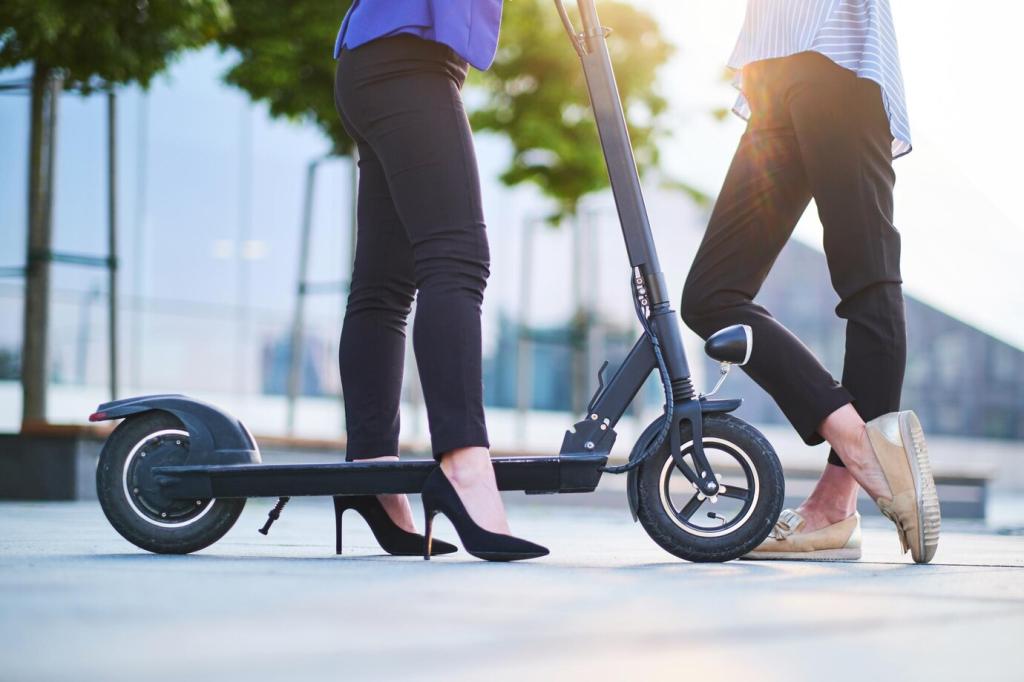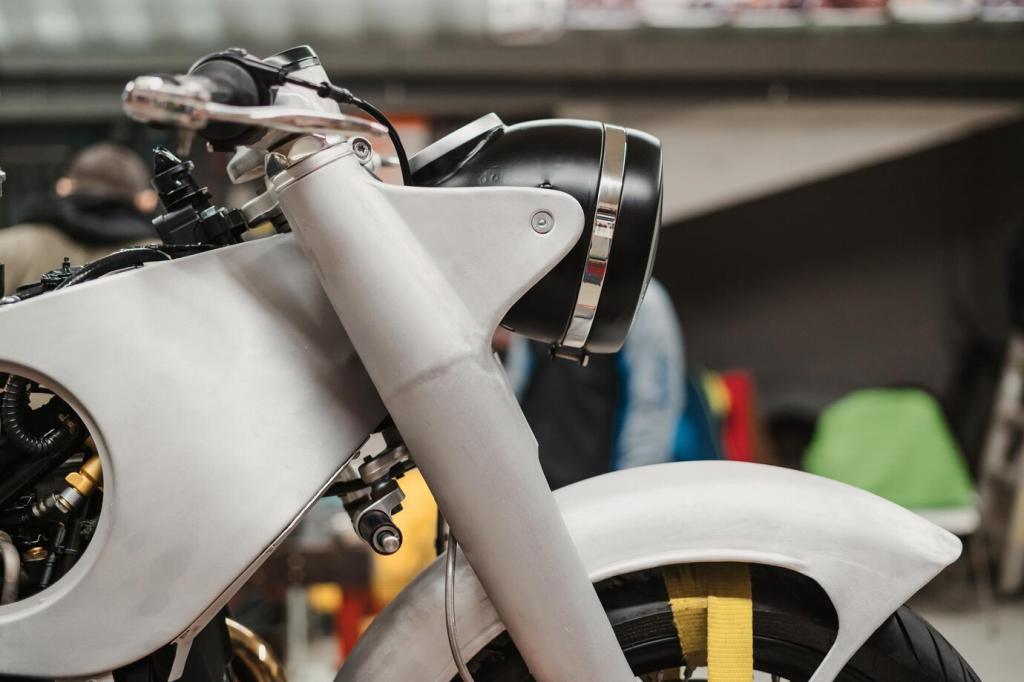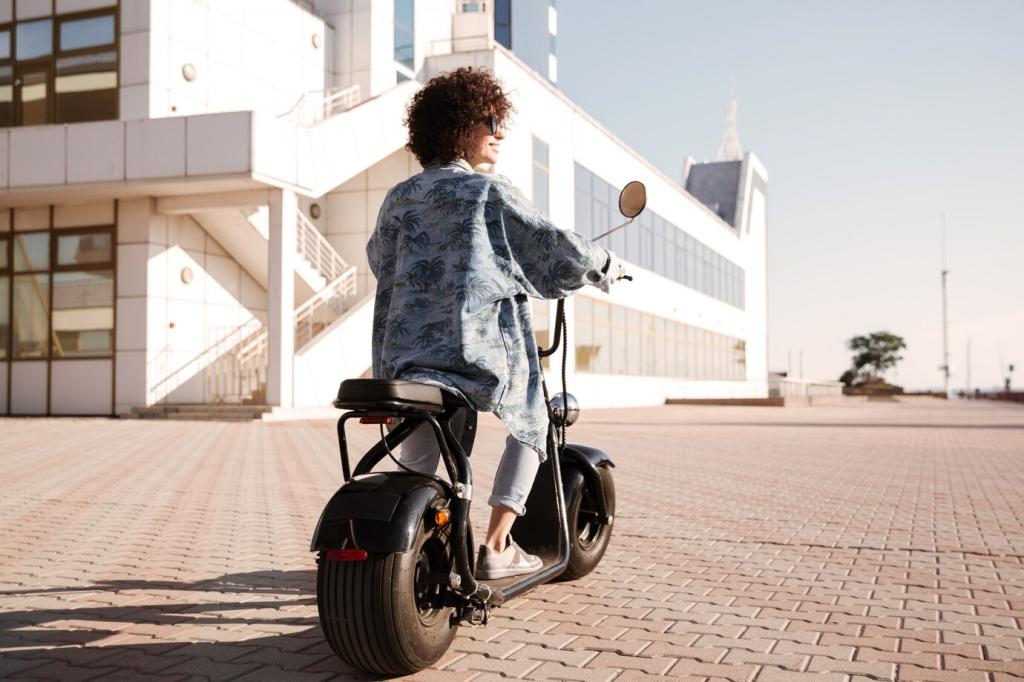Guide to Cleaning Your Electric Scooter Properly
Chosen theme: Guide to Cleaning Your Electric Scooter Properly. Roll into a smoother, safer ride with a friendly, step-by-step approach to cleaning every part of your scooter without risking electronics, performance, or your weekend.


Power Down, Unplug, and Cool Off
Switch your scooter fully off, disconnect the charger, and let the components cool if you’ve just ridden. Cleaning a warm motor or controller risks condensation issues. Stabilize the scooter on a stand or wall, and remove accessories that could snag or get wet.

Know Your IP Rating to Avoid Damage
Check the manual for the IP rating—many scooters are IP54, which means splash resistant, not waterproof. Avoid pressurized water, submersion, or soaking seams. Understanding this small code determines how wet you can safely get without compromising the deck, ports, or display.

Gather Smart, Gentle Tools and Cleaners
Use microfiber cloths, a soft detailing brush, mild dish soap, a small bucket, cotton swabs, and isopropyl alcohol for brakes. Skip harsh solvents or abrasive pads. Keep masking tape handy to cover the charge port, and set aside a dry towel for a careful final wipe-down.
Dry Cleaning: Remove Dust, Grit, and Loose Debris
Top-Down Dusting for a Gentler Clean
Work from the handlebar and display down to the deck and wheels. Use a soft brush to loosen grime in seams, throttle housings, and bell mounts. Wipe with a clean microfiber to capture particles, so they don’t grind into your scooter once water enters the picture.
Deck and Grip Tape Without Destroying Adhesive
Grip tape traps sand that can grind shoe soles and paint. Gently brush debris off first, then spot-clean with a lightly damp cloth. Avoid soaking edges; blot instead of scrubbing aggressively. For stubborn dirt, a foam cleaner and a soft brush keep the deck grippy and intact.
Wheels, Hubs, and Bearings Done Carefully
Lift grit from wheel treads with a stiff but non-metal brush. Avoid blowing high-pressure air into bearings, which can drive contaminants deeper. A gentle brush sweep along the hub and valve stem keeps parts clean without forcing dust into seals or compromising rolling efficiency.


Wet Cleaning Without Risking Electronics
Mix a few drops of dish soap with warm water. Dip a microfiber, wring it nearly dry, and wipe panels in small sections. Rinse the cloth often, then follow with a second damp cloth to remove residue. Keep water away from seams and screw heads wherever possible.
Wet Cleaning Without Risking Electronics
Jet streams can force water past seals into the battery compartment or controller. Even with IP54, pressurized water penetrates gaskets. Instead, use gentle wiping and a squeeze bottle for tiny dribbles if needed. Your scooter will thank you with longer-lasting electronics.
Detailing That Improves Safety and Performance
Use isopropyl alcohol on a clean cloth to wipe rotors and calipers, avoiding any lubricants near braking surfaces. Do not touch pads with oily fingers. A clean braking system reduces squeal and improves modulation, giving you more predictable stopping in wet and dry conditions.
Detailing That Improves Safety and Performance
After cleaning, inspect latch faces, bolts, and the hinge for grit. Wipe dry, then apply a tiny amount of appropriate lubricant to pivot points only, keeping clamping surfaces clean and oil-free. Tighten loose fasteners to prevent rattles and maintain solid, confidence-inspiring fold security.



Towel, Air, and Patience
Pat the scooter dry with absorbent towels, then let it air out, especially around the deck seams and under fenders. Avoid hairdryers on high heat, which can warp plastics. If you use compressed air, keep the pressure low and the nozzle at a respectful distance.

Reinstall Accessories and Listen for Rattles
Mount your bell, phone holder, and lights again, ensuring cables are routed neatly. Give the scooter a gentle shake to spot rattles. Tighten as needed, and confirm that the folding latch engages crisply without extra play or alarming creaks under light pressure.
A True Story: Clean Scooter, Better Commute
Maya’s rear brake squealed for weeks. One evening, she cleaned the rotor with alcohol, re-aligned the caliper, and brushed grit from the pads. The next morning, silence—plus a more confident stop at a crowded intersection that used to make her anxious every single day.

Build Your Routine and Join the Conversation
Wipe bars, deck edges, and lights; brush tires; spot-clean the grip tape; and check pressure. This fast, repeatable routine prevents heavy buildup. Tell us your favorite two-minute trick that makes the biggest difference, and we’ll feature top ideas in future posts.
Set aside time to detail brakes, hinges, reflectors, and cable runs. Re-torque key bolts and inspect tires closely. Add calendar reminders so you never miss a step. If you’ve refined your checklist, drop a comment—we love adding reader-tested improvements to our guide.
Subscribe for seasonal cleaning guides, rainy-day protection tips, and product tests. Ask questions about your model’s quirks, and share photos of before-and-after shine. Your feedback steers upcoming articles, so tell us what you want cleaned up next.
